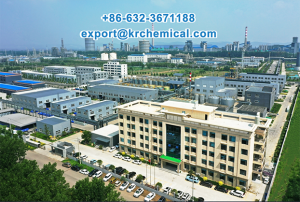Carbohydrazide (CH₆N₄O) is a versatile chemical compound with various applications across industries due to its properties as a reducing agent, oxygen scavenger, and intermediate in chemical synthesis. Below is a detailed overview of its roles and uses:
Role of Carbohydrazide
- Oxygen Scavenger:
- Carbohydrazide reacts with dissolved oxygen in water, forming nitrogen, water, and other harmless byproducts, which helps prevent corrosion in boiler and water treatment systems.
- It serves as an alternative to hydrazine, being less toxic and safer to handle.
- Reducing Agent:
- It is used to reduce metal ions or organic compounds in chemical reactions.
- Intermediate in Synthesis:
- Carbohydrazide acts as a precursor for synthesizing pharmaceuticals, agrochemicals, and polymer materials.
- Passivating Agent:
- In metal treatment, carbohydrazide helps in passivating steel surfaces by forming protective oxide layers.
- Stabilizer:
- It stabilizes peroxide compounds in certain industrial formulations.
Uses of Carbohydrazide
1. Boiler and Water Treatment
- Purpose:
Removes dissolved oxygen to prevent pitting and corrosion in high-pressure boilers. - Application:
- Added to feedwater in concentrations tailored to system size and water quality.
- Converts into volatile compounds under high temperatures, offering extended protection.
2. Chemical Synthesis
- Role:
Used as an intermediate for producing:- Pharmaceuticals (e.g., for cancer or tuberculosis treatments).
- Agrochemicals like herbicides and pesticides.
- Polymers, resins, and stabilizers in industrial applications.
3. Explosives and Propellants
- Role:
As a precursor for high-energy materials due to its nitrogen-rich structure.
4. Textile and Paper Industries
- Purpose:
Acts as a cross-linking agent for improving the mechanical strength and finish of products.
5. Photography
- Purpose:
Stabilizes color developers in photographic processes.
How to Use Carbohydrazide
For Boiler Water Treatment
- Dosage:
- Calculate the required amount based on oxygen concentration and system volume.
- Typical dosing is 0.2-0.5 ppm for every ppm of dissolved oxygen.
- Application:
- Inject directly into feedwater tanks or the boiler system.
- Operation:
- Monitor oxygen levels and adjust dosing accordingly.
For Chemical Synthesis
- Used under controlled conditions as a reagent in organic reactions, often requiring specialized equipment to manage its reactivity.
Safety and Handling
- Toxicity:
- Although less toxic than hydrazine, handle with care to avoid inhalation or skin contact.
- Storage:
- Keep in a cool, dry place away from oxidizing agents.
- Protective Measures:
- Wear gloves, goggles, and appropriate protective clothing during handling.
Carbohydrazide’s versatility and effectiveness make it a valuable compound in industrial water treatment and chemical manufacturing, particularly in applications requiring oxygen scavenging or reduction processes.

